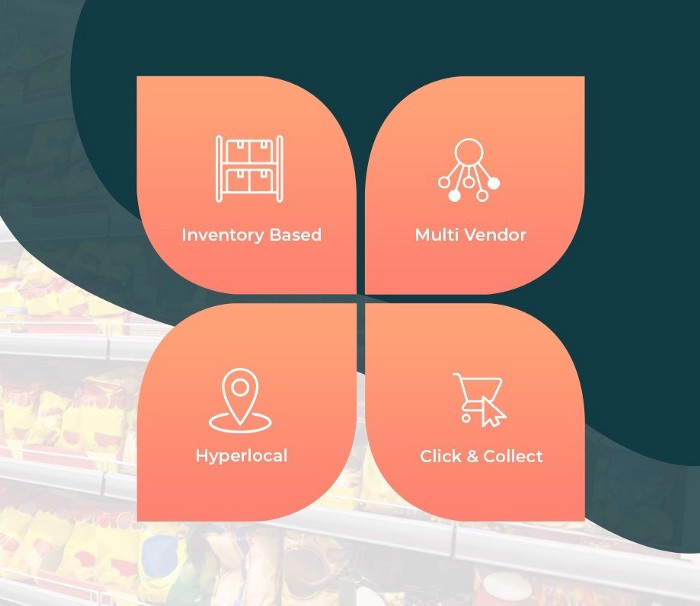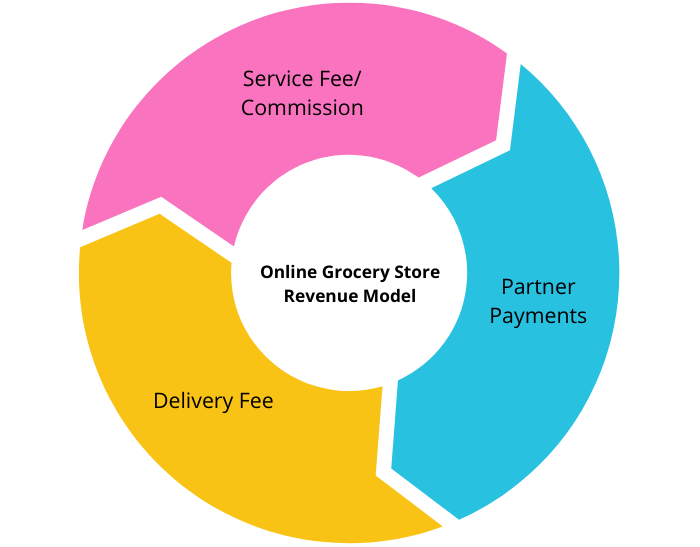Due to Coronavirus, 2020 has been a challenging year so far but these challenges have also created multiple opportunities for aspiring entrepreneurs. The increase in the number of eGrocery sales is an indication of an investable cum profitable niche in the eCommerce industry.
According to the Coresight Research U.S. Online Grocery Survey 2020, “U.S. online grocery sales grew 22% in 2019 and, propelled by high demand from nationwide COVID-19 lockdowns, stand to surge about 40% this year.”
These stats indicate that the eGrocery industry is a sure shot hit amid coronavirus and even in the post-pandemic world, which the experts are referring to as a “new normal”.
So, what is the minimum time required for setting-up an eGrocery store? A year? Few months? A couple of weeks? No! You can start your online grocery shopping and delivery business in just 4-5 days.
You just have to choose the business model according to your requirements and then a suitable turkey grocery solution.
- Types of Business Models for an Online Grocery Business
- Revenue Model For an Online Grocery Store
- Steps to Launch an eGrocery Platform
Types of Business Models for an Online Grocery Business

- Inventory Based Business Models: In this business model, the eCommerce grocery store owner is responsible for managing the inventory, interacting with consumers (through an online platform), and ensuring the timely delivery of products. The Alibaba backed BigBasket is a leading example that works on an inventory-based business model. The company switched to this model type in the year 2013 and witnessed escalated sales in a short period.
Pros:
- Good control over maintaining the quality of products as well as delivery.
- Quick delivery due to the involvement of a single player.
Challenges:
- Maintaining the warehouse/inventory creates logistical issues.
- Can prove to be an expensive business model
- Multi-vendor Marketplace Business Model (Zero inventory model): This type of business model provides an eCommerce platform for multiple buyers and sellers. The eCommerce platform is also responsible for facilitating payments and shipping. However, packing can be either done by the seller or the website owner.
The owner of a multi-vendor marketplace has nothing to do with the maintenance of the inventory. Peapod is an example that operates on multiple vendor marketplace business models.
Pros:
- Penetration in larger markets with multiple vendors and buyers.
- Minimum or no inventory cost.
Challenges:
- Difficulty in maintaining quality control & consistency over supply.
- Cut-throat competition
- Hyperlocal Grocery Business Model: The objective of the hyperlocal grocery business model is to cater to the demand of customers within a limited geographical area by empowering the local grocers. Instacart provides hyper-local on-demand grocery delivery by connecting customers with personal shoppers.
Pros:
- Helps to provide rocket-speed delivery
- Shipments can be scheduled
Challenges:
- Logistical expenses might increase
- Difficulty in maintaining inventory as it is dependent on multiple offline stores
- BOPIS (Buy Online, Pick-up In-Store): Another name for this business model is ‘Click & Collect.’ It is the perfect blend of online and offline grocery shopping. This concept enables shoppers to purchase products online and later collect them from the physical store themselves, as per their convenience.
This business model is highly in demand amid the Coronavirus outbreak. Research conducted by Post and Parcel suggests that by the year 2025, approximately 10% of sales will be drawn by adopting the click and collect retail strategy. Kroger is an online grocery giant that recently celebrated the success of its 1000th click and collect grocery shopping service.
Pros:
- No expenditure on setting up expensive retail spaces.
- Reduction in delivery cost further leads to lesser chances of cart abandonment
Challenges:
- In the absence of a proper store pick-up space, there might be issues like long queues
- The requirement of additional staff to manage store pick-ups
Revenue Model For an Online Grocery Store
The revenue streams of an online grocery store depend on the business model used by the marketplace. But there are some basic revenue streams that apply to most of the grocery business models.

Take a look at the following image consisting the general revenue streams for an eGrocery store:
- Delivery Fee: The marketplace usually charges some amount as a delivery fee from customers
- Partner Payments: Marketplaces can charge partnership payment from the listed retail stores in return for providing them with an online retail space.
- Service Fee/Commission: The online marketplace can charge a commission fee on every order from the vendor.
Steps to Launch an eGrocery Platform
Now, we have a clear understanding of the business model and revenue model of an online grocery business. The next step is to launch the eGrocery store using a readymade solution like Growcer or Growcer Lite. Developed by FATbit Technologies, Growcer is a dedicated script for setting up grocery shopping websites/mobile apps. The software is loaded with rich features and comes at a reasonable price.
Free installation, 1-year free technical support, multiple support channels, complete ownership, easy payment teams are some of the major highlights of this software solution. With the help of this software solution, you can launch your online grocery store in just 3-4 days.
Here is a step-by-step guide to launching an online grocery platform:
- Set-up & Installation: You need a server space from a selected hosting service provider based on the server specifications provided by the technical team. The system is checked after the pre-installation process is completed and finally, the platform is deployed on your server.
- Configure Settings: Once the platform is installed, the next step is to configure the settings like location, language, logo, etc.
- Adding Products: The products are added by using the product catalog and bulk addition of products can also be done by using the export/import feature. The process of adding products might differ based on the type of business model.
- Launching Marketplace: The next step in the process is to launch your marketplace, without any hassles.
- Managing Marketplace: Using additional features like Approving/Managing requests, delivery management, analytics, etc can help you efficiently manage your online marketplace.
Content Source:
https://www.yogrowcer.com/how-to-start.php
https://www.fatbit.com/fab/different-business-models-to-launch-online-grocery-business/

